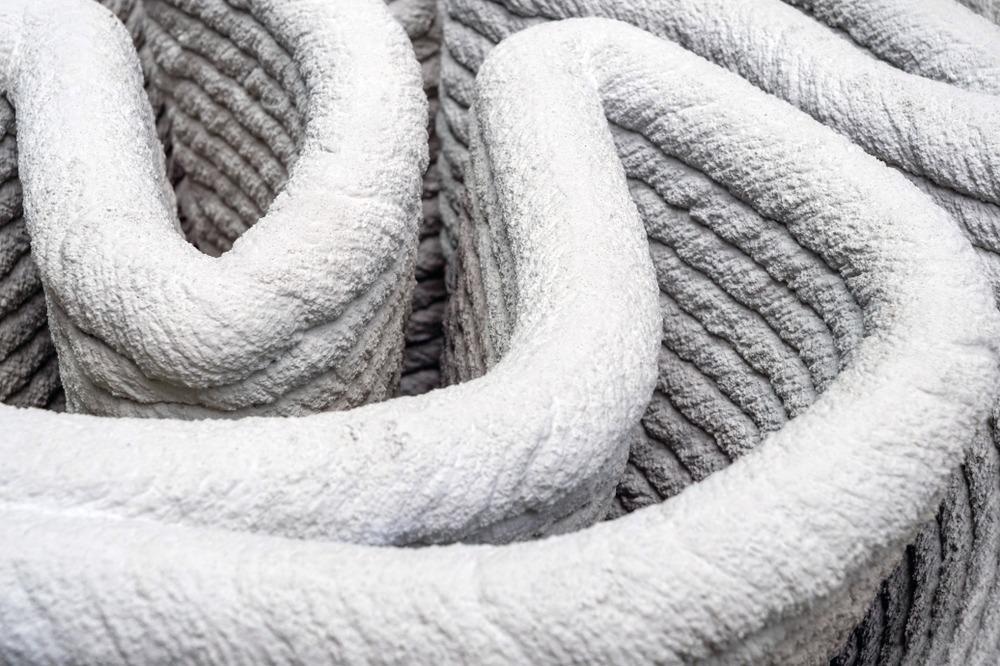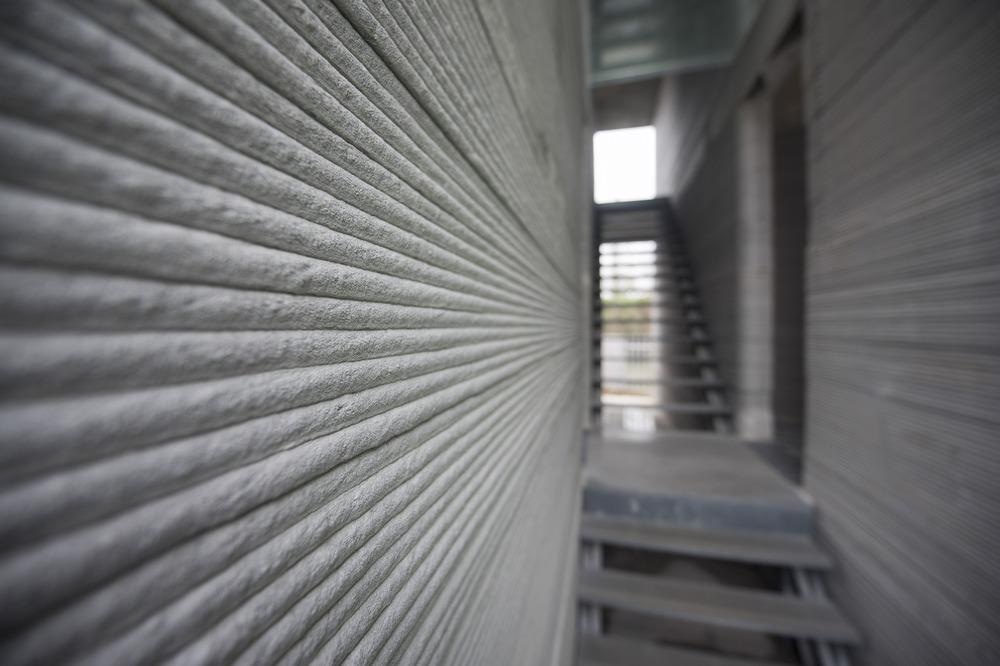Additive manufacturing, also referred to as 3D printing, is a technology that has gotten significant attention from researchers, manufacturers, and builders the world over for its ability to quickly and easily fabricate multi-dimensional objects.

Image Credit: Zapp2Photo/Shutterstock.com
An additive manufacturing system fabricates objects based on three-dimensional digital drawings. It's commonly used to make prototypes, but it has also been used to make finished products in structures. Construction companies have used additive manufacturing to build residential homes and other structures.
The 3D printing of concrete opens up a new world of possibilities. Currently, there are two different methods for concrete-based additive manufacturing: powder-based and extrusion-based.
Power-based printing involves a binder solution being extruded into a bed of ceramic powder. The binder creates layer after layer of solid material out of the powder bed. Once a fully formed item or structure has been created, the excess powder is removed using jets of air.
Extrusion-based printing involves the layering of liquid concrete based on a three-dimensional design. This process requires a special kind of printable cement that must be made in specialized mixtures specifically made for additive manufacturing. The cement mixture for extrusion-based printing needs to have the correct physical qualities to ensure proper workability and hardening, as well as the desired mechanical qualities of the finished product.
Both types of printing can create a structure without the need for formwork or vibration, both of which are needed for conventional concrete construction. The additive manufacturing of concrete offers a number of benefits including greater design freedom, decentralization, bespoke production, lower costs, and faster speeds.
Greater Design Freedom
Because conventional concrete manufacturing and construction require the use of molds or formwork, it only allows for a limited range of shapes and forms. Based on three degrees of freedom, additive manufacturing allows for the creation of highly complex shapes and forms.

Image Credit: Matjazz/Shutterstock.com
Not limited by conventional designs, additive manufacturing allows for a massive range of possibilities and design techniques, including small holes and porous structures that improve form and function. Additive manufacturing can also create complex curves and lines without any additional costs or time. This allows for more efficient use of space without sacrificing structural integrity.
Decentralization
Additive manufacturing allows for the on-location creation of forms and structures. this has the effect of decentralizing design, manufacturing, and construction. Parts or components do not need to be fabricated in a facility and then transported to a location. This significantly reduces expenses associated with logistics and transportation.
Also, objects in structures can be designed across the world and sent to a location for printing. If the need suddenly arises, a structure can be designed quickly and digitally, then sent to a 3D printer for fabrication. This allows for a much more robust and flexible construction or fabrication process.
Bespoke and Small-Batch Production
Digital designs are infinitely customizable. This quality lends itself perfectly bespoke and small batch production via 3D printing.
If a custom tool, object, or structure must be created, a designer can tweak an established design based on requirements. The design can then be adjusted incrementally until the desired outcome is produced. This type of bespoke and small batch production capability can be done without any new or additional machinery.
The Science Behind 3D Printing in Construction
Faster and Cheaper Construction
Even on a small scale, construction can be a lengthy and expensive undertaking. Traditional construction requires a lot of tools, equipment, and raw materials. It also requires a team of skilled laborers.
By comparison, additive manufacturing is far cheaper and faster. A 3D printer can work around the clock. It doesn't require lunch or bathroom breaks. It will work on holidays and weekends without complaint.
Additive manufacturing also doesn't require workers to set up conventional formwork. this essential part of traditional concrete construction can represent more than 50 percent of overall costs. Additive manufacturing also significantly cuts back on waste materials.
Challenges and the Road Ahead
When it comes to working with 3D printed concrete, one of the biggest challenges is that it produces unreinforced concrete. While reinforcements could be inserted, the technology would be more viable if a more stable form of printable concrete could be developed.
The challenges of additive manufacturing are also dependent on the desired geometry of finished products. often, finished concrete products require some type of treatment, and complex geometry is allowed by additive manufacturing could significantly complicate essential treatments.
there are currently a number of different additive manufacturing processes for concrete. Each one has specific advantages and disadvantages associated with it. Over time, a singular optimal process that addresses major challenges could emerge.
Resources and Further Reading
Jo, J. Development of a 3D Printer for Concrete Structures: Laboratory Testing of Cementitious Materials. International Journal of Concrete Structures and Materials. [Online] Available at: https://ijcsm.springeropen.com/articles/10.1186/s40069-019-0388-2
Valente, M. et al. Extrusion-Based Additive Manufacturing of Concrete Products: Revolutionizing and Remodeling the Construction Industry. Journal of Composites Science. [Online] Available at: https://www.mdpi.com/2504-477X/3/3/88/htm
Global Electronic Services. 3D Printing Pros and Cons. [Online] Available at: https://gesrepair.com/3d-printing-pros-and-cons/
Disclaimer: The views expressed here are those of the author expressed in their private capacity and do not necessarily represent the views of AZoM.com Limited T/A AZoNetwork the owner and operator of this website. This disclaimer forms part of the Terms and conditions of use of this website.